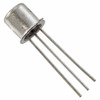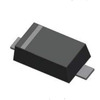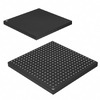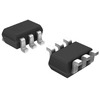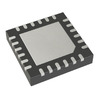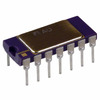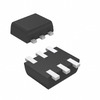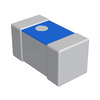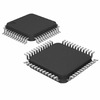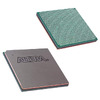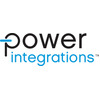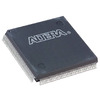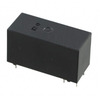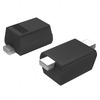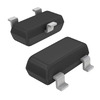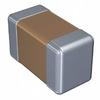BNO055 Orientation Sensor: Architecture, Pinout, and Datasheet
This article explores the BNO055 sensor, a remarkable advancement in sensor technology that integrates accelerometer, gyroscope, and magnetometer functionalities to provide reliable absolute orientation data. The BNO055 not only streamlines the design process by eliminating the need for multiple sensors and complex calibrations but also enhances performance in applications such as robotics and virtual reality. Its ability to consolidate various sensory inputs into comprehensive orientation information positions the BNO055 as a cutting-edge solution in our rapidly evolving technological world.Catalog
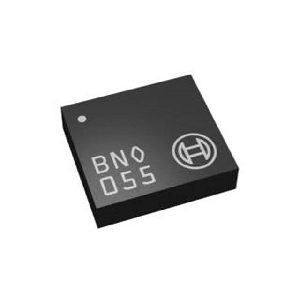
What is the BNO055?
The BNO055 showcases ingenuity by merging multiple sensing technologies into one efficient 9-axis orientation sensor. It houses a 14-bit accelerometer, a 16-bit gyroscope, a geomagnetic sensor, and a 32-bit ARM Cortex M0+ microcontroller within a tidy System in Package (SIP). This compact arrangement simplifies design plans and bolsters resourcefulness in applications where space is priceless. The sensor achieves this through its smart 28-pin LGA assembly, with dimensions of 3.8 mm x 5.2 mm x 1.1 mm. With its minimal footprint, the BNO055 adapts effortlessly into space-conscious devices, including wearables, drones, and smartphones. By adopting such purposeful compactness, it can trim down the product's bulk and scale, catering to eager to uplift portability and user satisfaction. Internally, the BNO055 is capable of swift data fusion and dependable sensor data delivery. Its embedded microcontroller manages complex calculations autonomously, lightening the primary system processor's burden, thereby allowing more room for pursuing other imperative tasks. This independence is a great asset in applications needing accelerated data processing, assuring steady and immediate performance.
BNO055 Pin Configuration
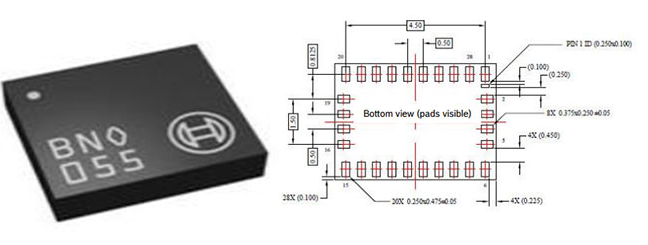
|
Pin No |
Name |
I/O Type |
Description |
Function |
||
|
I2C |
UART |
HID-I2C |
||||
|
1 |
PIN1 |
- |
Do not connect |
DNC |
||
|
2 |
GND |
Ground |
GND |
GND |
||
|
3 |
VDD |
Supply |
VDD |
VDD |
||
|
4 |
nBOOT_LOAD_PIN |
Digital In |
Bootloader mode select pin (active low) |
nBOOT_LOAD_PIN |
||
|
5 |
PS1 |
Digital In |
Protocol select pin 1 |
GNDIO |
VDDIO |
GNDIO |
|
6 |
PS0 |
Digital In |
Protocol select pin 2 |
GNDIO |
GNDIO |
VDDIO |
|
7 |
PIN7 |
- |
Do not connect |
DNC |
||
|
8 |
PIN8 |
- |
Do not connect |
DNC |
||
|
9 |
CAP |
- |
External capacitor |
CAP |
||
|
10 |
BL_IND |
Digital Out |
Boot loader indicator |
DNC |
||
|
11 |
nRESET |
- |
Reset pin (active low) |
nRESET |
||
|
12 |
PIN12 |
- |
Do not connect |
DNC |
||
|
13 |
PIN13 |
- |
Do not connect |
DNC |
||
|
14 |
INT |
Digital Out |
Interrupt output |
Interrupt |
||
|
15 |
PIN15 |
Ground |
Connect to GNDIO |
GNDIO |
||
|
16 |
PIN16 |
Ground |
Connect to GNDIO |
GNDIO |
||
|
17 |
COM3 |
Digital In |
Digital interface pin 3 |
I2C address select |
GNDIO |
GNDIO |
|
18 |
COM2 |
Digital I/O |
Digital interface pin 2 |
GNDIO |
||
|
19 |
COM1 |
Digital I/O |
Digital interface pin 1 |
SCL |
Rx |
SCL |
|
20 |
COM0 |
Digital I/O |
Digital interface pin 0 |
SDA |
Tx |
SDA |
|
21 |
PIN21 |
- |
Do not connect |
DNC |
||
|
22 |
PIN22 |
- |
Do not connect |
DNC |
||
|
23 |
PIN23 |
- |
Do not connect |
DNC |
||
|
24 |
PIN24 |
- |
Do not connect |
DNC |
||
|
25 |
GNDIO |
Ground |
GNDIO |
GNDIO |
||
|
26 |
XOUT32 |
Digital Out |
Optional OSC port |
OSC Output |
||
|
27 |
XIN32 |
Digital In |
Optional OSC port |
OSC Input |
||
|
28 |
VDDIO |
Supply |
VDDIO |
VDDIO |
||
BNO055 Architectural Design
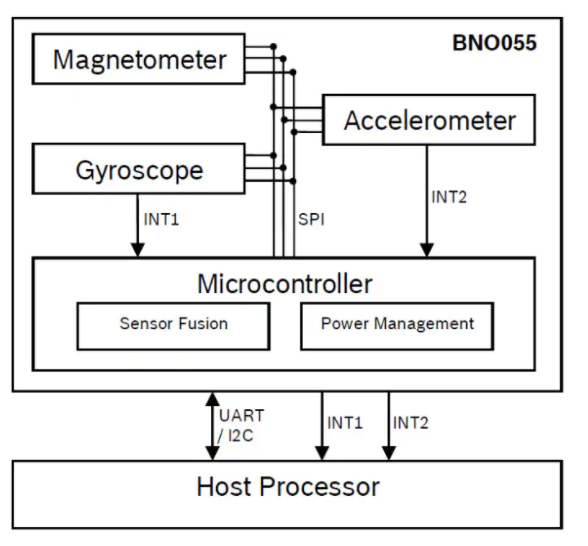
BNO055 Technical Specifications
|
Type |
Parameter |
|
Factory Lead Time |
18 Weeks |
|
Package / Case |
28-TFLGA Module |
|
Number of Pins |
2 |
|
Packaging |
Tape & Reel (TR) |
|
Part Status |
Active |
|
Number of Terminations |
28 |
|
Terminal Form |
BUTT |
|
Number of Functions |
1 |
|
Terminal Pitch |
0.5mm |
|
Output Type |
I2C, UART |
|
Supply Voltage-Min (Vsup) |
1.7V |
|
Sensor Type |
Accelerometer, Gyroscope, Magnetometer, 9 Axis |
|
Width |
3.8mm |
|
Lead Free |
Lead Free |
|
Mounting Type |
Surface Mount |
|
Surface Mount |
YES |
|
Operating Temperature |
-40°C~85°C TA |
|
Published |
2015 |
|
Moisture Sensitivity Level (MSL) |
1 (Unlimited) |
|
Terminal Position |
BOTTOM |
|
Peak Reflow Temperature (Cel) |
260 |
|
Supply Voltage |
2.5V |
|
Time@Peak Reflow Temperature-Max (s) |
NOT SPECIFIED |
|
Supply Voltage-Max (Vsup) |
3.6V |
|
Analog IC - Other Type |
ANALOG CIRCUIT |
|
Height Seated (Max) |
1.18mm |
|
RoHS Status |
ROHS3 Compliant |
Connection Diagram of the BNO055
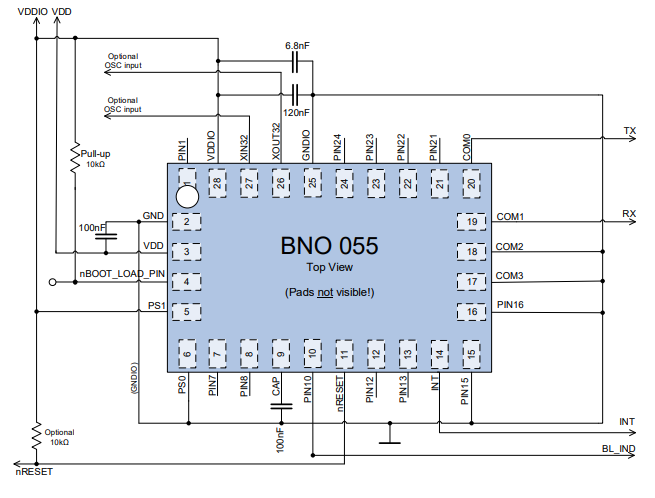
Features of the BNO055
Expansive Orientation Data Insights
The BNO055 sensor is distinguished by its ability to deliver expansive orientation data, covering both quaternions and Euler angles. This facility is a conduit for precise motion tracking and control, highly relevant in fields like robotics, virtual reality, and navigation. The transformation between these two data formats requires expertise in rotations and angular measurements, broadening the spectrum of applications where precision is prioritized.
Fusion of Advanced Sensor Technologies
Featuring an assembly of advanced sensors, the BNO055 measures acceleration, rotation rate, and geomagnetic fields. This amalgamation enhances the fusion of sensor data, yielding more accurate and reliable orientation outputs. The sensor's on-chip fusion algorithms ease the processing demands generally associated with these tasks, thereby optimizing computational efficiency and extending battery life.
Miniaturized Design with Efficient Power Usage
Despite its exhaustive capabilities, the BNO055's compact size makes it well-suited for applications with limited space availability. Its intelligent power management modulates operation efficiently across power spectrums, facilitating its integration into various electronic ecosystems.
Versatile Voltage Compatibility
The BNO055's accommodation of diverse voltage levels enables its application in a wide range of settings. This adaptability is prized in scenarios with varied power sources. Many harness this feature when designing systems that require both energy efficiency and high performance, achieving a smooth integration across numerous platforms.
Applications of the BNO055
Sophisticated Navigation Frameworks
The BNO055 sensor is eagerly integrated into complex navigation frameworks, where its ability to provide accurate orientation and motion tracking ignites progress in cutting-edge settings. These capabilities are an important asset for developing systems, enhancing performance specifically in dynamic environments typical of unmanned and autonomous vehicles.
Pioneering Robotics
In robotic advancements, the BNO055 sensor plays a role in achieving precise coordination and nuanced movement. Assisting in spatial awareness and decision-making processes, the sensor supports robots undertaking ambitious tasks like object manipulation and obstacle evasion. Evidence during system development indicates that with BNO055, robots achieve more fluid and responsive actions, boosting their efficiency exponentially.
Precision Health Monitoring
Healthcare innovations exploit the BNO055 for its proficiency in capturing detailed body movement metrics. This sensor enhances wearable health devices by enabling tracking of physical activity and posture, which supports both clinical care and individual wellness. By offering consistently accurate data, these devices facilitate informed health decisions. The nuanced insights drawn from development emphasize the importance of data precision in improving proactive health management strategies.
Augmented Reality Platforms
BNO055 enriches augmented reality (AR) platforms by enabling the precise overlay of digital artifacts, offering an immersive experience. Its advanced motion tracking ensures smooth and realistic integration of virtual content, heightening engagement and interaction. Insights from sector trends emphasize the role of sensors such as BNO055 in driving AR adoption due to increased interactivity and immersion.
Comparison Between BNO055 and BNO085
The BNO055 and BNO085 are widely respected for producing detailed vector data concerning acceleration, angular velocity, and magnetic fields. These abilities support a variety of applications, from electronics to industrial systems, yet their differing features influence performance across diverse contexts. The BNO085 distinguishes itself with improvements in sensor fusion and data processing, incorporating advanced detection and optimization capabilities. These refinements render it effective in dynamic environments where swift responsiveness and precision are desired. For example, the sensor's ability to adjust to sudden changes in movement is akin to the instinctive way one might shift their weight when navigating uneven grounds. BNO085's sophisticated algorithms serve as an invaluable guide within autonomous vehicles, continuously recalibrating path selections amid fluctuating traffic conditions, demonstrating the impact a well-chosen sensor has on enhancing system efficiency in applications.
While the BNO055 is often employed in stable environments, its operation in intricate scenarios frequently requires supplementary measures or additional software to match the performance naturally provided by the BNO085. For instance, in a wearable device creating personalized exercise regimes based on movement analysis, the BNO085's precision and adaptability through reduced latency and improved feedback. Both the BNO055 and BNO085 offer considerable benefits in sensor technology. The decision between them should be guided by a thorough grasp of their unique features and the demands of the particular application.
BNO055 Manufacturer Information
Bosch Sensortec, segment of Robert Bosch GmbH, specializes in developing advanced MEMS-based sensor solutions. These sensors form the bedrock of improving smartphones, wearables, and IoT devices, enabling them to keenly sense and interact with their surroundings. Through the years, Bosch Sensortec has epitomized innovation, continually advancing the blend of sensor technology and electronics. MEMS technology began as a specialized field, yet its transformation has dramatically altered modern electronics. With Bosch Sensortec leading the charge, these developments have yielded dynamic solutions that enhance device performance. The complex construction of MEMS sensors promotes energy-efficient functionality. Bosch Sensortec showcases leadership in MEMS-based sensor innovation, with breakthroughs that reshape how devices interact with their environments. The constant effort to stretch the limits of technology highlights the prospect for sensors to occupy an increasingly central position in the digital landscape.
Datasheet PDF
BNO055 Datasheets:
About us
ALLELCO LIMITED
Read more
Quick inquiry
Please send an inquiry, we will respond immediately.
Frequently Asked Questions [FAQ]
1. What are the operational principles of BNO055?
The BNO055 operates by harmonizing inputs from triaxial accelerometers, gyroscopes, and magnetometers, allowing for continuous observation of movement and magnetic influences. This synchronization embodies the core concept of sensor fusion, providing consistent and dependable information. In practical applications, systems utilizing the BNO055 improved motion detection, which can be effortlessly integrated into various fields such as virtual reality interfaces and robotic navigation systems.
2. Can you describe Adafruit BNO055?
Adafruit BNO055 simplifies sensor integration by offering inherent sensor fusion, delivering dependable orientation information swiftly without demanding intricate algorithm development. This proves notably beneficial for rapid prototyping and integration, in scenarios such as educational projects or development environments. Employing this sensor in projects can notably reduce development timelines by alleviating the typical challenges associated with sensor calibration and data processing.
3. How is an absolute orientation sensor characterized?
An absolute orientation sensor efficiently synthesizes inputs from a magnetometer and accelerometer, with potential gyroscope contributions, to precisely compute isolated gravity vectors. This function facilitates detailed motion analysis, in domains demanding high precision, like aerospace or advanced vehicular systems. By delivering stable and precise information, these sensors support dependable orientation readings, enabling to devise systems that necessitate meticulous motion tracking and regulation.

PN2222 vs. 2N2222: Exploring Their Interchangeability and Differences
on November 12th

USB3300 Transceiver: Datasheet, Pinout, and Specifications
on November 12th
Popular Posts
-

What is GND in the circuit?
on January 1th 3168
-

RJ-45 Connector Guide: RJ-45 Connector Color Codes, Wiring Schemes, R-J45 Applications, RJ-45 Datasheets
on January 1th 2739
-

Understanding Power Supply Voltages in Electronics VCC, VDD, VEE, VSS, and GND
on November 17th 2360
-

Fiber Connector Types: SC Vs LC And LC Vs MTP
on January 1th 2214
-

Comparison Between DB9 and RS232
on January 1th 1834
-

What Is An LR44 Battery?
Electricity, that ubiquitous force, quietly permeates every aspect of our daily lives, from trivial gadgets to life-threatening medical equipment, it plays a silent role. However, truly grasping this energy, especially how to store and efficiently output it, is no easy task. It is against this background that this article will focus on a type of coin cell battery that may seem insignificant on the...on January 1th 1806
-

Understanding the Fundamentals:Inductance Resistance, andCapacitance
In the intricate dance of electrical engineering, a trio of fundamental elements takes center stage: inductance, resistance, and capacitance. Each bears unique traits that dictate the dynamic rhythms of electronic circuits. Here, we embark on a journey to decipher the complexities of these components, to uncover their distinct roles and practical uses within the vast electrical orchestra. Inductan...on January 1th 1759
-

CR2430 Battery Comprehensive Guide: Specifications, Applications and Comparison to CR2032 Batteries
What is CR2430 battery ?Benefits of CR2430 BatteriesNormCR2430 Battery ApplicationsCR2430 EquivalentCR2430 VS CR2032Battery CR2430 SizeWhat to look for when buying the CR2430 and equivalentsData Sheet PDFFrequently Asked Questions Batteries are the heart of small electronic devices. Among the many types available, coin cells play a crucial role, commonly found in calculators, remote controls, and ...on January 1th 1725
-

What Is RF and Why Do We Use It?
Radio Frequency (RF) technology is a key part of modern wireless communication, enabling data transmission over long distances without physical connections. This article delves into the basics of RF, explaining how electromagnetic radiation (EMR) makes RF communication possible. We will explore the principles of EMR, the creation and control of RF signals, and their wide-ranging uses. The article ...on January 1th 1713
-

Comprehensive guide to hFE in transistors
Transistors are crucial components in modern electronic devices, enabling signal amplification and control. This article delves into the knowledge surrounding hFE, including how to select a transistor's hFE value, how to find hFE, and the gain of different types of transistors. Through our exploration of hFE, we gain a deeper understanding of how transistors work and their role in electronic circu...on November 17th 1683
